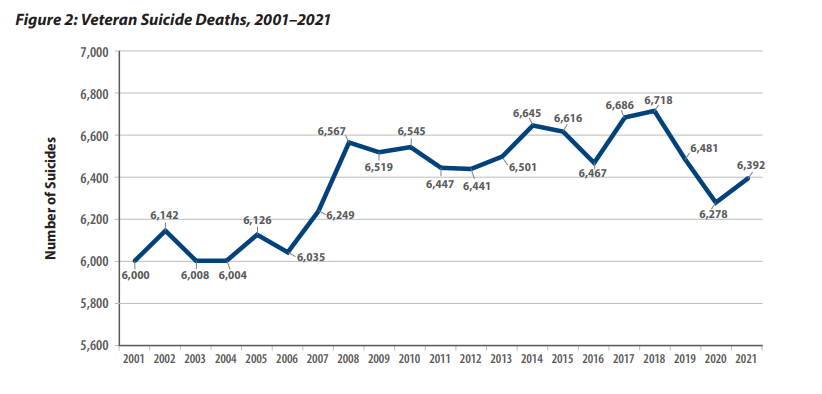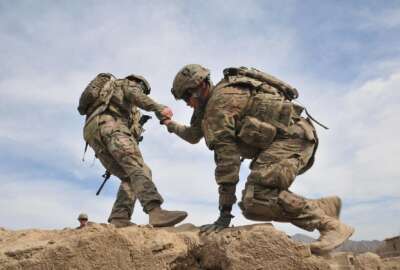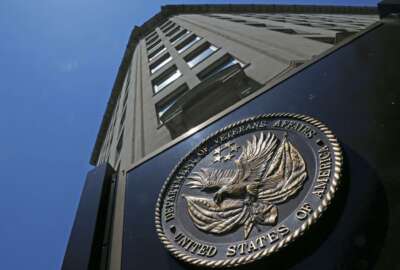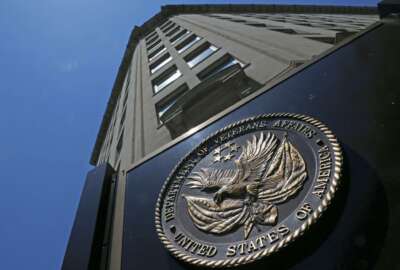VA launches ‘full hiring initiative’ for mental health care amid uptick in veteran suicides
The Department of Veterans Affairs is planning to staff up on mental health professionals and launch new resources to address an uptick in veteran suicides.
The Department of Veterans Affairs is planning to staff up on mental health professionals and launch new resources to address an uptick in veteran suicides.
The VA on Thursday released its National Veteran Suicide Prevention Annual Report, which tracks veteran suicide in 2021 — the most recent year the VA has data on.
The report shows 6,392 veterans died by suicide in 2021 — 114 more veterans than in 2020. That’s a nearly 2% increase. In 2021, an average of 17.5 veterans died from suicide each day.
The number reflects an increase in deaths by suicide in the non-veteran U.S. population. That population saw 40,020 suicide deaths in 2021 — 2,000 more than in 2020.
VA Secretary Denis McDonough said in a statement that “there is nothing more important to VA than preventing veteran suicide.”
“One veteran suicide will always be one too many, and we at VA will use every tool at our disposal to prevent these tragedies and save Veterans’ lives,” McDonough said.

Matthew Miller, executive director for VA suicide prevention, told reporters Wednesday that veterans in 2021 saw increased financial strain, housing instability and decreased socialization. That led to higher rates of stress and depression.
“Regardless of the reasons, any increase in veteran suicide is unacceptable,” Miller said.
VA bases its report on verified data from the Centers for Disease Control and Prevention, and the Defense Department.
The VA, in its report, plans to launch a “full hiring initiative” for mental health experts. That includes hiring additional mental health care professionals and expanding its own programs to train mental health care professionals.
Undersecretary for Health Shereef Elnahal told reporters that increased mental health staffing is particularly important to VA, higher levels of mental health staffing have been associated with decreased suicidal behavior among patients within health care systems.
“We are of course looking to hire as many clinicians within the mental health sphere as possible,” Elnahal said.
The VA saw a record year of hiring in fiscal 2023 — especially across its health care workforce.
The Veterans Health Administration this fiscal year is looking at more targeted hiring goals focused on addressing a shortage of mental health care professionals.
Elnahal said a lot of veterans who die by suicide have never interacted with the VA’s mental health system, or a mental health provider overall, “which is why we have to think more expansively than just access to health care on this very important mission.”
VA is also focused on hiring peer-to-peer support specialists, particularly for veterans with conditions that increase their risk of suicide, such as substance abuse disorder.
“We know that peer support specialists can be among the only types of staff within a health care setting that can convince a veteran to pursue treatment, and to follow up with that treatment —having gone through that experience not only serving in the military, but also through those really tough conditions after they were discharged,” Elnahal said.
The VA currently employs about 1,200 paid peer specialists across its 170 VA medical centers.
The VA also ramped up hiring for its Veterans Crisis Line. The department hired about 900 staff members since the implementation of 988, a shortened number for the mental health crisis and suicide prevention hotline, in July 2022.
Miller said the VA nearly doubled the VCL workforce since 2021, going from 500 responders to nearly 1,000 in 2023.
The Veterans Crisis Line answers 98% of incoming calls. The remaining 2% of calls include call abandonment and callers hanging up. The VA follows up with those callers.
The VA answered 96% within 20 seconds or less, which is the standard for 911 calls.
The VA is also setting up a consultation hub as part of its National Veterans Financial Resource Center. Miller said the hub will provide financial tools and resources to veterans.
Miller said the hub is a “real reflection” of VA’s evolving approach to public health.
“We know from the data that one of the highest risk factors for suicide for veterans is financial well-being or financial insecurity,” Miller said.
“We see that in a public health approach, mental health and mental health care is critical to any strategic plan. But that strategic plan must also extend beyond the individual and beyond mental health and into the socio-ecological environment in which they live,” he added.
Miller said the hub will give veterans access to certified financial advisors. The VA plans to launch a website in connection with the hub later this fall.
Under the Comprehensive Prevention, Access to Care and Treatment (COMPACT) Act, veterans experiencing an acute suicidal crisis can receive free emergency care at any VA or non-VA health care facility. Under the law, more than 33,000 veterans have received free emergency health care.
VA is also partnering with community-based suicide prevention organizations, expanding firearm suicide prevention efforts, and encouraging veterans to reach out for help through a national veteran suicide prevention awareness campaign.
The suicide rate of veterans receiving VA health care and benefits has been stable for the past few years. Miller said VHA has significantly reduced suicide rates for patients in its care between 2001 to 2021.
That includes groups such as veterans diagnosed with a depressive disorder, veterans diagnosed with PTSD, veterans diagnosed with an anxiety disorder and veterans diagnosed with any mental health or substance use disorder.
“We start at a higher baseline of risk and a higher rate. But what we’re able to do in collaboration with the community and with veterans has lowered that risk across time as we’re engaged with veterans,” Miller said.
Women veterans saw a 38% increase in suicide deaths between 2020 and 2021. American Indian and Alaskan Native veterans saw a 50% increase in suicides during the same period. Homeless veterans experienced a 38% increase in suicides.
The CDC projects a rise in suicide rates in the non-veteran U.S. population in 2022, which may signal an increase in veteran suicides in next year’s report.
“I would not be surprised if 2022 mirrored what is being seen in the U.S. population,” Miller said. “We’re also seeing some very positive signs from our last fiscal year. So I’m optimistic.”
If you or someone you know is having thoughts of suicide, contact the Veterans Crisis Line to receive free, confidential support and crisis intervention available 24 hours a day, 7 days a week, 365 days a year. Dial 988 then Press 1, chat online at VeteransCrisisLine.net/Chat, or text 838255.
Copyright © 2024 Federal News Network. All rights reserved. This website is not intended for users located within the European Economic Area.
Jory Heckman is a reporter at Federal News Network covering U.S. Postal Service, IRS, big data and technology issues.
Follow @jheckmanWFED






